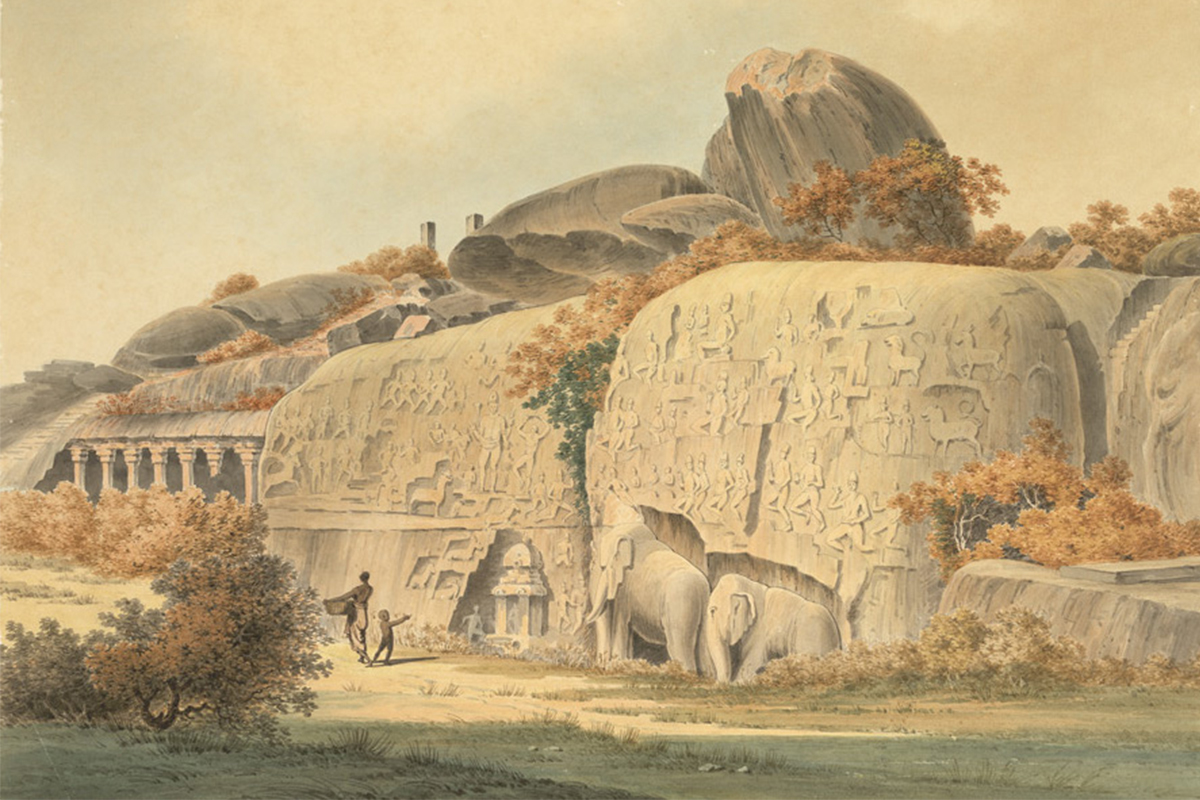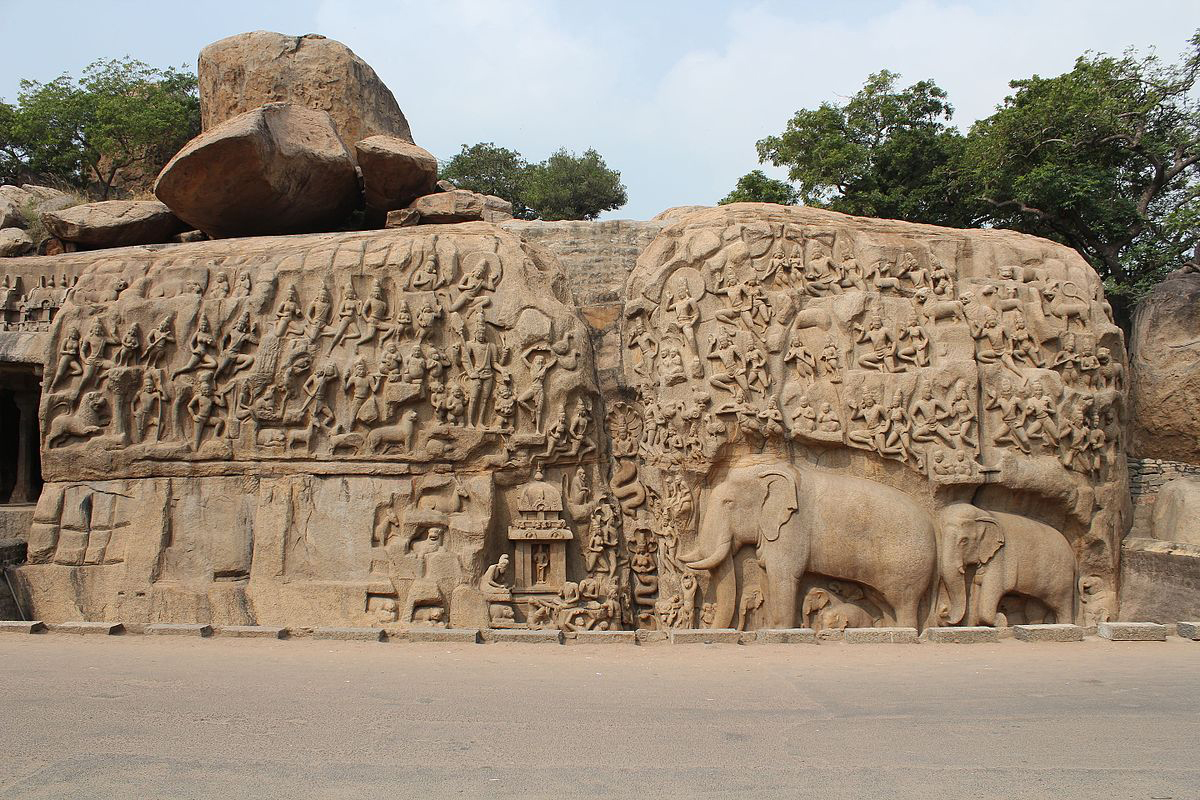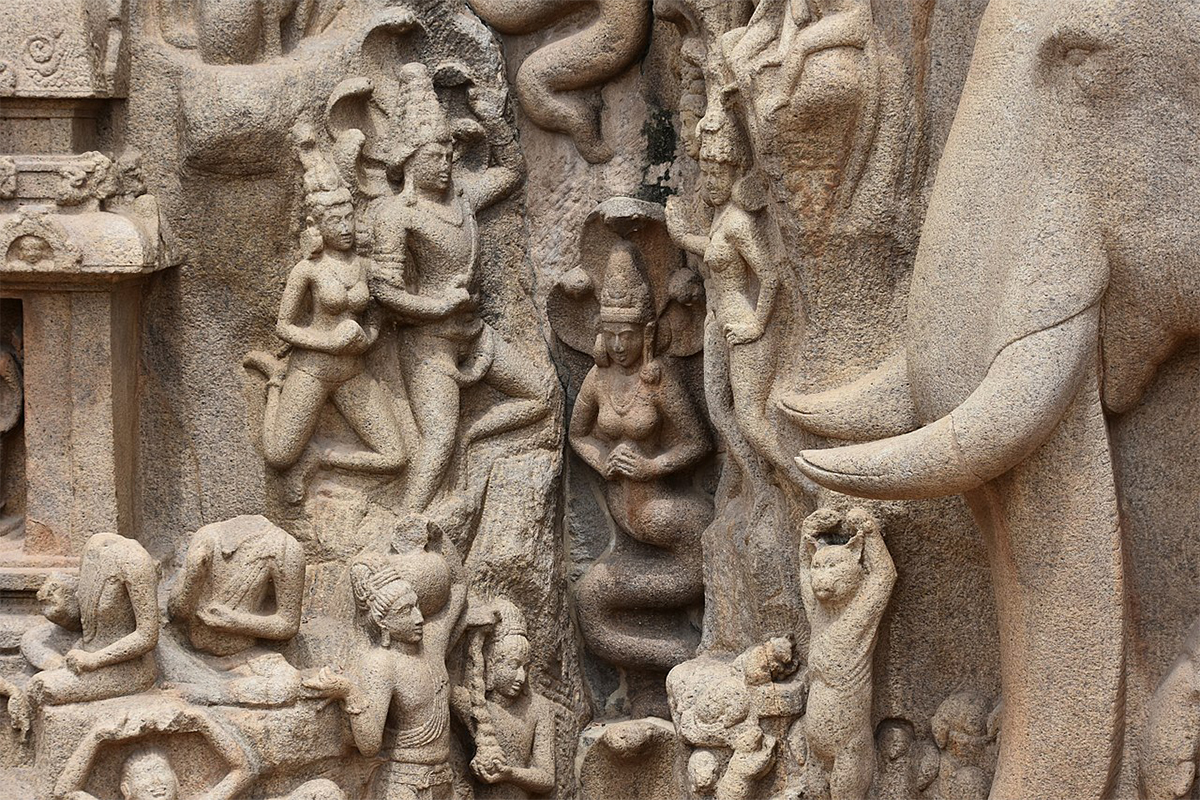ARTICLE
Descent of the Ganges or Arjuna’s Penance
The central figures of the ascetic and Shiva have been variously interpreted by scholars. They may constitute a depiction of Arjuna’s penance to acquire the pashupatastra (a deadly weapon) from Shiva to use in the Mahabharata war. It has also been interpreted as the penance of the mythical king Bhagiratha, imploring Shiva to bear the force of the descent of the Ganges from the heavens to the earth. It is possible that the depiction was intentionally made ambiguous in keeping with literary genres of the time such as dvisamdhi-kavya, or poetry crafted to have multiple possible meanings and interpretations. The relief also depicts a number of other episodes and stories in no single narrative order: it may thus be meant more generally as an allegory for spiritual penance and Shiva’s benevolence. Additionally, since the relief was located at Mamallapuram, a port city frequented by foreign traders, the ambiguity of the images may have served to communicate more universal ideas as opposed to specific cultural markers.
The relief has a pool at its base and a storage tank above; scholars believe that these features indicate that it was used during celebratory occasions. Water may have been let out of the tank to cascade down the cleft to recreate a flowing river. An unfinished relief showcasing the same theme is also located near it, leading to speculation that the site served as an outdoor workshop. As of 1984, the relief was been designated a UNESCO World Heritage Site as a part of the Group of Monuments at Mamallapuram, and continues to be a major tourist attraction as of writing.
Bibliography
Our website is currently undergoing maintenance and re-design, due to which we have had to take down some of our bibliographies. While these will be re-published shortly, you can request references for specific articles by writing to hellomapacademy@map-india.org.









